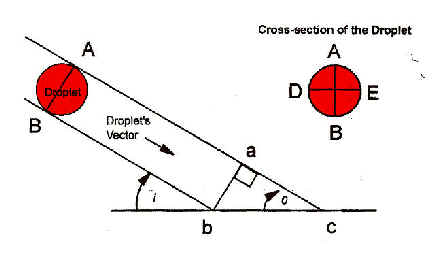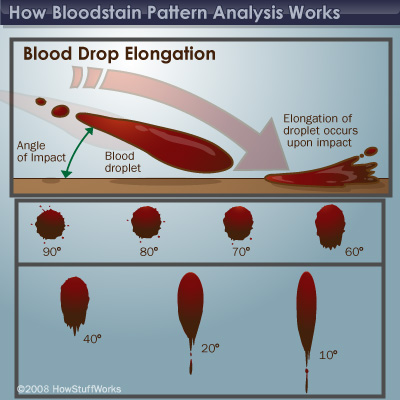Area of Convergence and Origin:
![]()
| Area of Convergence |
This is the term used to describe the area
where two-dimensional lines drawn according to the angle
of impact along the long axes cross each other, or
converge. |
| Area of Origin |
The term used of the area calculated to be
location of causation for the spatter. |


